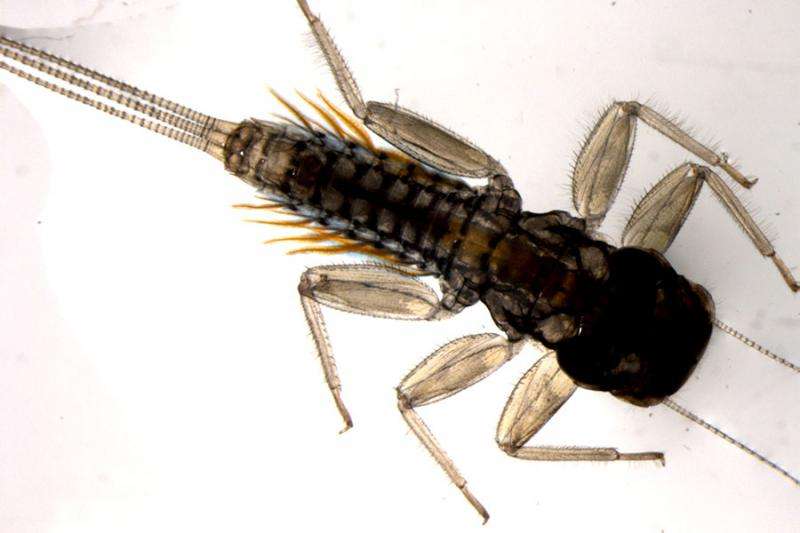New study challenges understanding of salinity impacts on freshwater biodiversity

New research exploring the impact of salinity on insects in freshwater environments has led to a discovery that seems to contradict long-held theories about mechanisms for salt regulation in invertebrates.
The results of the study, published today in Royal Society Open Science, provide insight into why surprisingly low salinity levels are causing high mortality rates in organisms that are a vital component of freshwater food webs.
"Agriculture, mining and climate change are driving rising salinity levels in the world's freshwater ecosystems, threatening global biodiversity," said lead author Dr Renee Dowse, a freshwater ecotoxicologist from the School of Life Sciences at the University of Technology Sydney (UTS).
"Our study organism, the mayfly nymph Austrophlebioides pusillu, belongs to a group of macroinvertebrates that predominantly live in rivers and streams. They are an important food source for other riverine animals and through their feeding act as little vacuum feeders that help keep our rivers and streams clean," she said.
Mayfly larvae even feed on otherwise potentially harmful nutrient-rich run-off from human activities – for example, from sewage treatment effluent and agricultural waste waters.
Dr Dowse said recent international field studies have shown the loss of mayfly biodiversity and abundance at "surprisingly low salinities".
"Declining numbers are concerning, especially because conventional wisdom about salt-regulation mechanisms in these types of organisms can't explain it," she said.
Dr Dowse said these insects are considered osmoregulators, in that they actively regulate their internal media to remain at a relatively constant osmotic pressure that is different to their external environment. The external salinity levels experienced by the insects in the study should not cause mortality.
"The response of A. pusillus was totally unexpected and challenges the extent of our understanding of the relationship between osmoregulation and mortality in freshwater invertebrates," Dr Dowse said.
The research was funded by the NSW Environmental Trust as part of a study into the effects of temporally varying salinity on river biodiversity and included researchers from Unilever Centre for Environmental Water Quality; Institute for Water Research, Rhodes University, Grahamstown, South Africa; and Institute for Applied Ecology, University of Canberra.
"Given that salinisation is an increasing global threat to freshwaters, there is an urgent need for studies into the osmo-physiology of mayflies to determine if their loss at locations with slightly elevated salinity is a direct result of external salinity, or other, possibly physiological, causes," Dr Dowse said.
More information: Renee Dowse et al. The mayfly nymphHarker defies common osmoregulatory assumptions, Royal Society Open Science (2017). DOI: 10.1098/rsos.160520
Journal information: Royal Society Open Science
Provided by University of Technology, Sydney
















